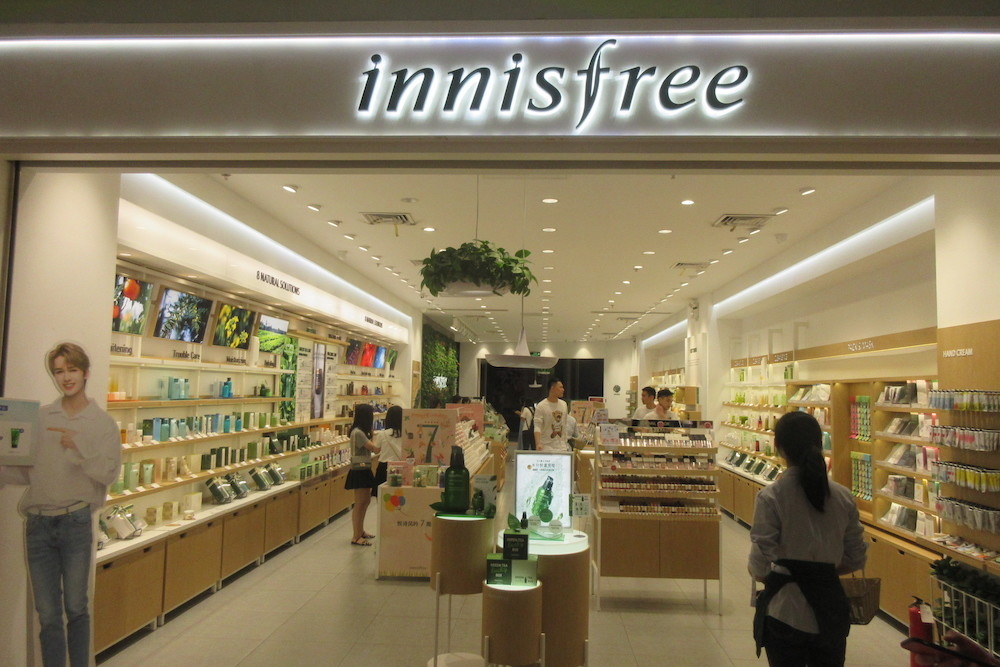Reporter | Chen Qirui
Edit | Lou Shuqin
1
In an increasingly competitive beauty market, brands need to work harder to gain an edge.
According to the Korea Herald, Amorepacific Group, which owns brands such as Innisfree and Snowflake Show, is undergoing a new round of strategic adjustments for the Chinese market. Digitalization and high-end are the two centers of this round of adjustment, which are embodied in the group's plan to reduce the nearly 800 stores opened by its brands in China to about 140, and will invest more resources in online channels and high-end brands in the future.
With the expansion of affordable positioning brands such as Innisfree and Itti's House, Amorepacific's influence in the Chinese beauty market has risen rapidly. Among them, since Entering the Chinese market in 2012, Innisfree has entered second- and third-tier cities at a rate of 100 new stores per year since 2014, with more than 600 stores in China at its peak.
Before the arrival of the wave of new consumer domestic beauty, the affordable Korean makeup brand represented by Innisfree was the beauty enlightenment of many Chinese consumers, and many Korean dramas at that time also boosted the voice and sales of Korean makeup brands in China. However, after the "THAAD incident" in 2017, Korean cosmetics quickly fell cold in the Chinese market, although it still occupies a large market share, but the comprehensive communication effect is obviously unable to compare with the peak period.

Image source: Wikipedia
It was also at this stage that domestic beauty brands such as Perfect Diary, Mary Dejia and Orange blossoms became popular one after another. With the strong productivity of China's beauty foundries, domestic brands have achieved the same fast speed of upgrading as Korean makeup. These new domestic brands are similar in pricing to affordable Korean makeup brands such as Innisfree Fengyin, but because the former is more familiar with the domestic social media environment, it can achieve stronger communication effects in marketing.
Squeezed, the most direct response of affordable Korean cosmetics brands is the decline in sales, and then began to close stores on a large scale. Previously, Interface News had written that in 2019, Innisfree closed 40 loss-making stores. The Korea Herald reported that due to the impact of the epidemic, the number of Innisfree stores in China in the past year has shrunk from 610 to 280. In March 2021, Itti House announced the closure of all offline direct stores in China, and the colorist of the beauty collection store became the only offline channel in the mainland.
However, when affordable Korean makeup is cold, some high-end brands with high-end positioning have shown a strong ability to bear pressure. Amorepacific's third-quarter results report shows that although the operating income in the reporting period was 1.1 trillion won, the increase was only 1.9%. In the Chinese market, total revenue fell by 10% in the quarter, but the launch of new high-end products brought about 50% sales growth to the Snowflake Show brand.
Image credit: Chiang Mai Citylife
As a competitor of Amorepacific, South Korea's LG Life Health also sees the advantages of high-end transformation. LG Life Health owns high-end brands such as "Whoo Hou" and Su Mi 37°, and the former has shown an explosive posture in its recent performance, breaking into the beauty sales list of "6.18" and "Double 11" two consumer nodes.
It is worth noting that in the construction of high-end image, Korean makeup brands are still weaker than Japanese makeup and European and American brands. For a long time, consumers have left a mostly affordable impression of Korean makeup, even if the mid-to-high-end Laneige and Snowflake Show are still far behind the brands of Shiseido Group and Estée Lauder Group in pricing.
Price is one of the most intuitive bases for consumers to determine brand positioning, and from this dimension, there are not many high-end Korean makeup brands that really form an advantage in popularity. In addition, in recent years, Japanese cosmetics and high-end brands in Europe and the United States have begun to emphasize the research and development of active ingredients, and specific ingredients as a logo to flaunt their high-end image.
However, what has really made Korean cosmetics brands really out of the circle recently is not a specific scientific research component, but the large discounts they can provide in the live broadcast room. This also means that the recent wave of high-end Korean makeup is likely to be only a temporary phenomenon. Taking advantage of the heat, brands that intend to transform clearly need to start a longer-term layout.